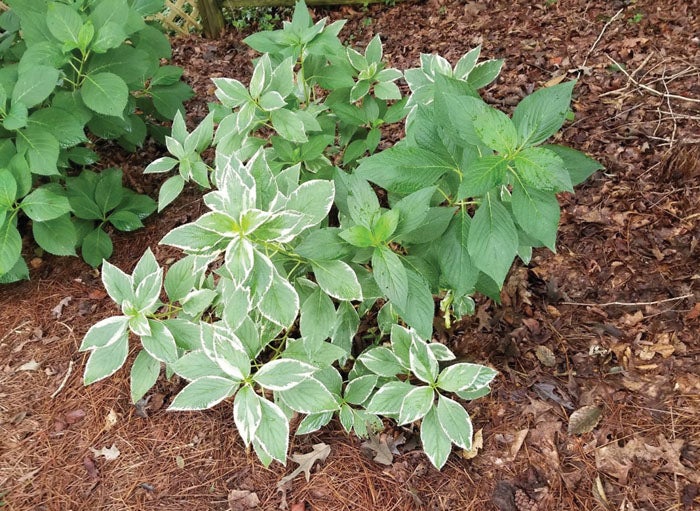Wet conditions prompting a variety of questions
Published 12:00 am Friday, August 24, 2018

- Submitted photo This variegated hydrangea is putting out plain, green leaves. What's going on?
We’ve been experiencing atypical summer weather with scattered showers in the evenings. Drier weather and cooler temperatures are bringing a hint of fall weather to come. Many people have questions about lawns and landscapes with our unusually wet late summer. Below are a few questions from Rowan County residents.
Question: My shrubs have grown quite a bit over the past few weeks with the recent rainfall. Can I prune them back now?
Answer: Yes, light, judicious pruning can occur all during the year, but avoid pruning spring flowering shrubs such as forsythia, azaleas and rhododendron. If you prune these now you will eliminate many of your spring flowers. Prune these flowering shrubs in the spring just after bloom. Wait until early spring to severely prune holly or boxwood to avoid possible winter damage. Ironically, maple and birch trees should be pruned now while they have leaves to avoid excessive bleeding.
Question: I have crabgrass that has completely taken over my lawn. What’s the best way to get rid of this grass before planting fescue in a few weeks?
Answer: Roundup (glyphosate products) will control this grass and other weeds. If you only have crabgrass you can use herbicide blends that contains diquat that will control the annual weed. Most lawns will have both Bermuda and crabgrass, so I would tend to recommend Roundup to be sure of the kill.
Question: I have bagworms in my pecan tree and they are really ugly. I’m worried these bugs will kill the tree. What can I do to eliminate them and keep them from defoliating my tree?
Answer: The insects you’re speaking of are actually fall webworms. Even though it looks bad for the tree, these caterpillars will not kill the tree. These are immature caterpillars of a moth that typically hatch out in late summer and early fall. The caterpillars can be controlled by opening the webs with a stick or pole, exposing them to birds and other natural predators which will control them without using insecticides.
Question: My variegated hydrangea, over the past few years, is starting to produce solid green leaves. I really like the variegated leaves and want them to produce more variegated leaves with more blooms. What can I do to improve my shrub?
Answer: Variegated plants in shady or semi-shady locations do not grow well and need adequate light. Often plants revert to solid green color to increase the production of chlorophyll. Drastic changes in heat or cold also can cause leaves to turn green. Waterlogged plants may also turn green and produce new green shoots.
Darrell Blackwelder is the retired county extension director with horticulture responsibilities with the North Carolina Cooperative Extension Service in Rowan County.


